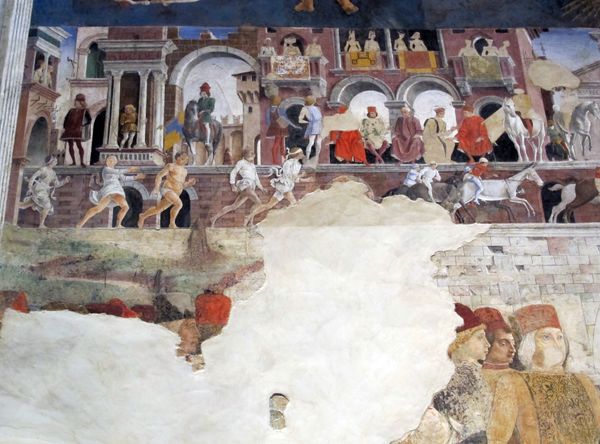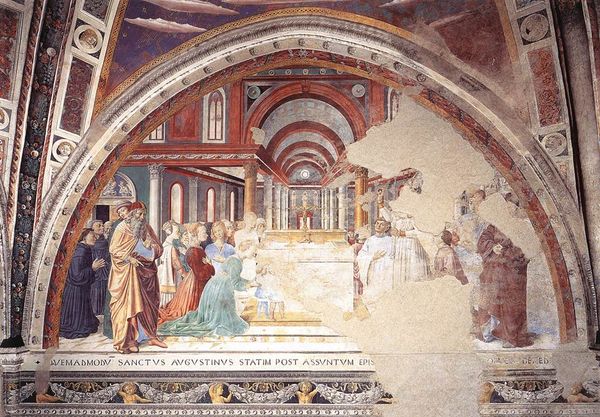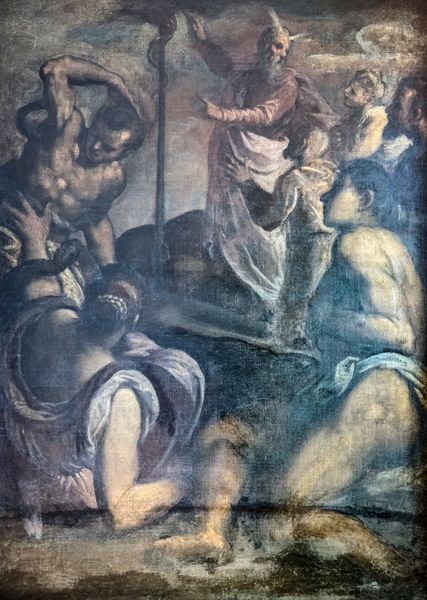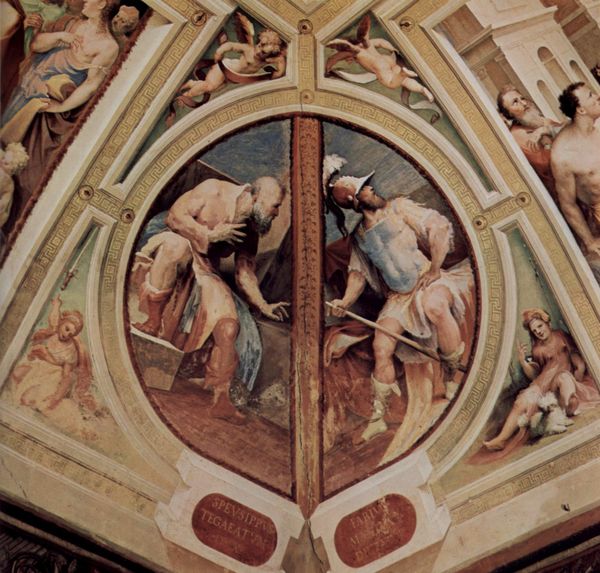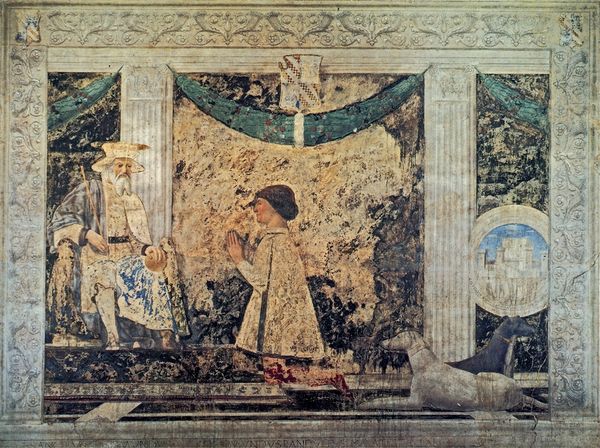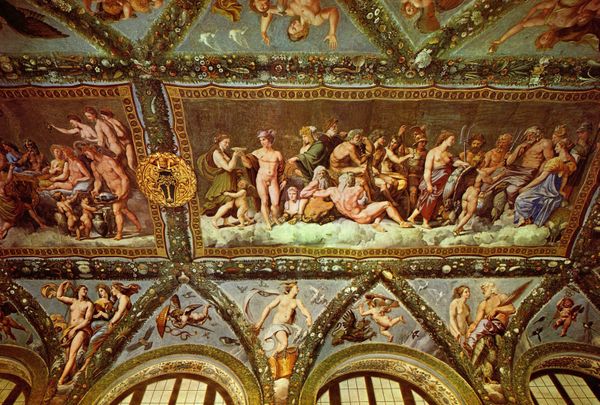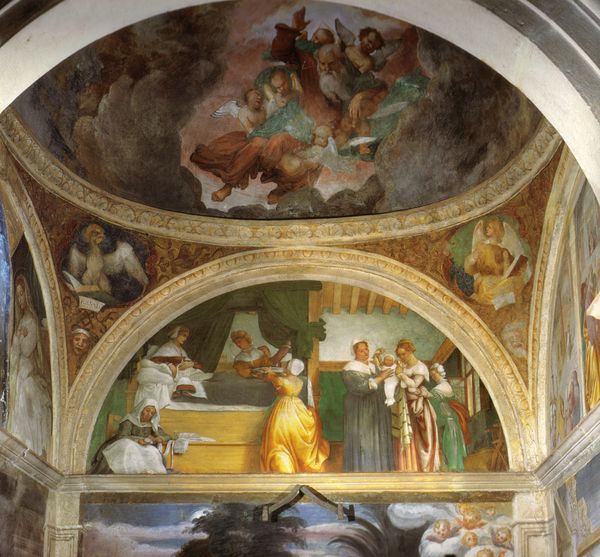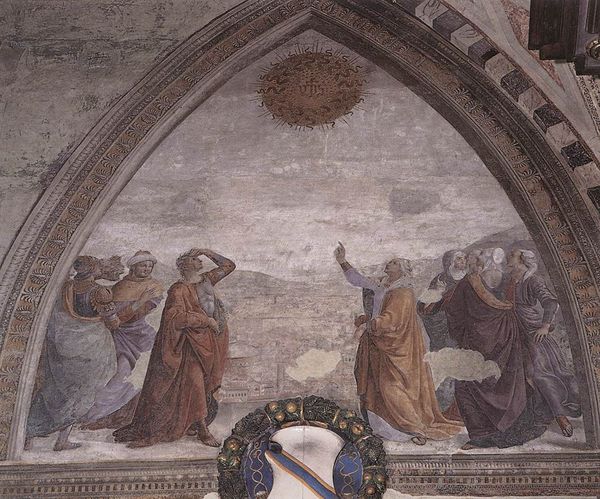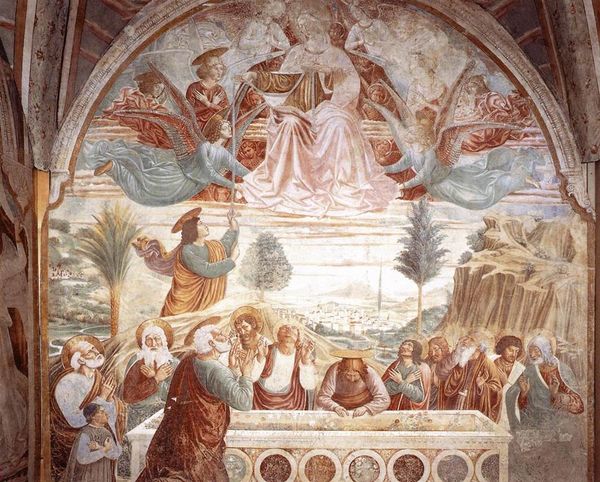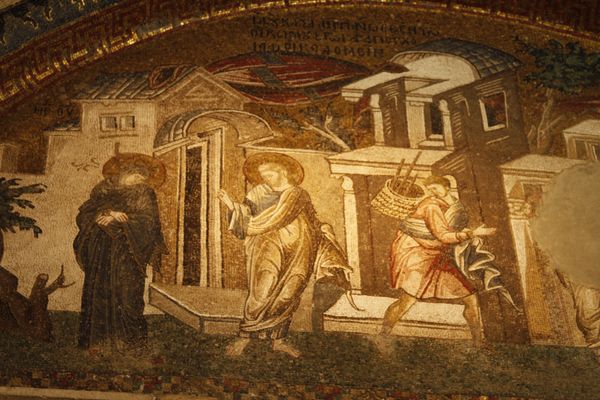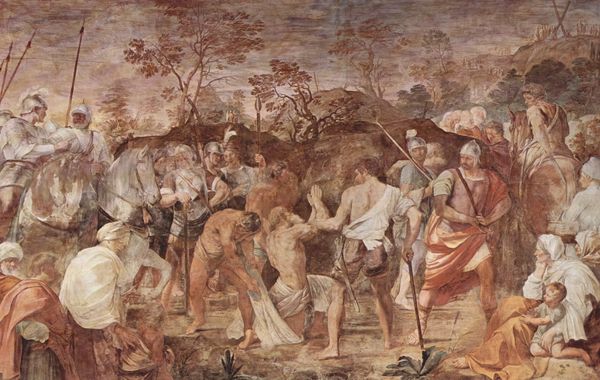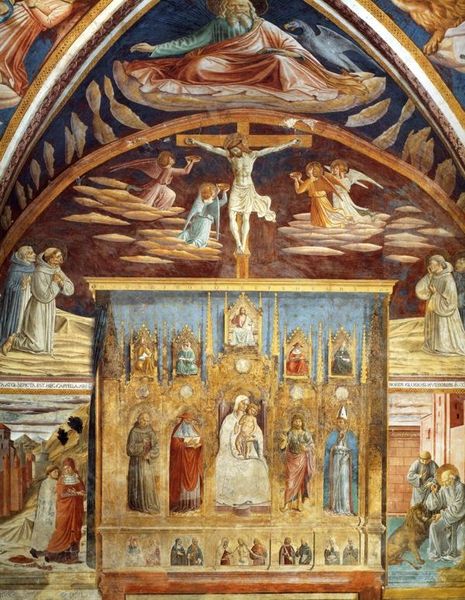
painting, fresco
#
narrative-art
#
painting
#
sculpture
#
figuration
#
fresco
#
christianity
#
painting painterly
#
history-painting
#
academic-art
#
italian-renaissance
#
early-renaissance
Dimensions: 390 x 747 cm
Copyright: Public domain
Curator: Let's focus on this fresco, "Death of Adam," created around 1458 by Piero della Francesca. It resides in the Basilica of San Francesco in Arezzo. Editor: Okay. Wow, it feels…calm? Even with death as its subject. The figures seem almost sculpted, and the landscape, despite its faded glory, is remarkably serene. Curator: Indeed. Consider how Piero has situated this pivotal moment within a broader theological framework. The death of Adam is not simply a personal tragedy but an event of immense historical consequence, influencing subsequent Christian doctrines. This fresco is a meditation on human fallibility. Editor: That makes sense. The light, especially, feels important. It’s very balanced, even handed – shining on everyone, regardless of their role in the drama. I find that strangely comforting, though. Almost like, "Yeah, we all end up here eventually." A leveling force. Curator: Absolutely. Note, too, the composition. Adam’s prone body is almost a horizontal echo of the landscape above. The bare tree signifies the loss of paradise, the barrenness that results from the Fall. It's a pointed metaphor for the transition to mortality. We can also observe a division of labor based on gender within this mourning scene. The women are positioned towards the side. This represents the gender norms. Editor: Oh, absolutely. But there's such stillness in their gestures, though! A quiet dignity. Even with the sorrow, I find such profound beauty here. And isn't that funny, we are here centuries later contemplating and creating meaning for ourselves. Curator: The enduring power of art. What started as a commentary about gendered existence or social division, we still create value around art in today's day and age. Editor: Exactly. From gender discourse to death doulas and environmental grief workshops, our obsession and negotiation of grief as individuals and as communities remains the same. Food for thought.
Comments
No comments
Be the first to comment and join the conversation on the ultimate creative platform.
